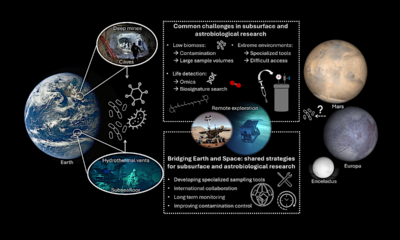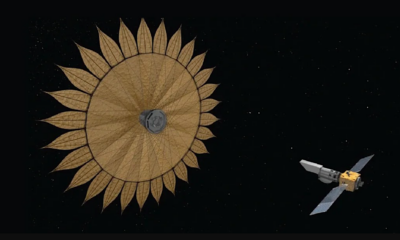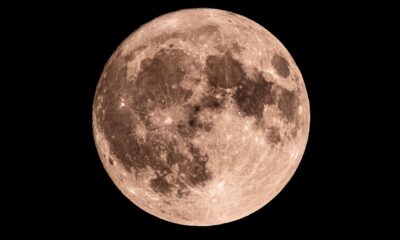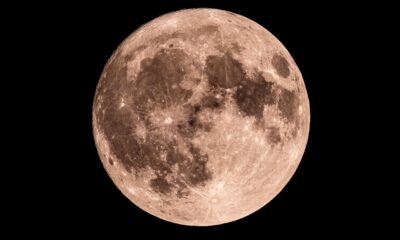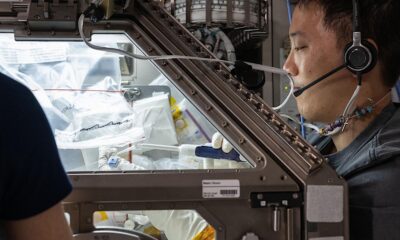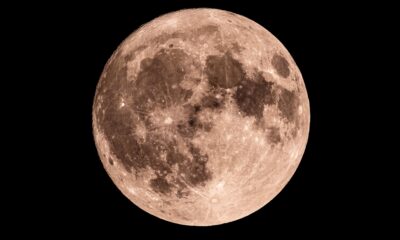Science
Plasma Physicist Claims Visibility of 3I/ATLAS Interstellar Comet
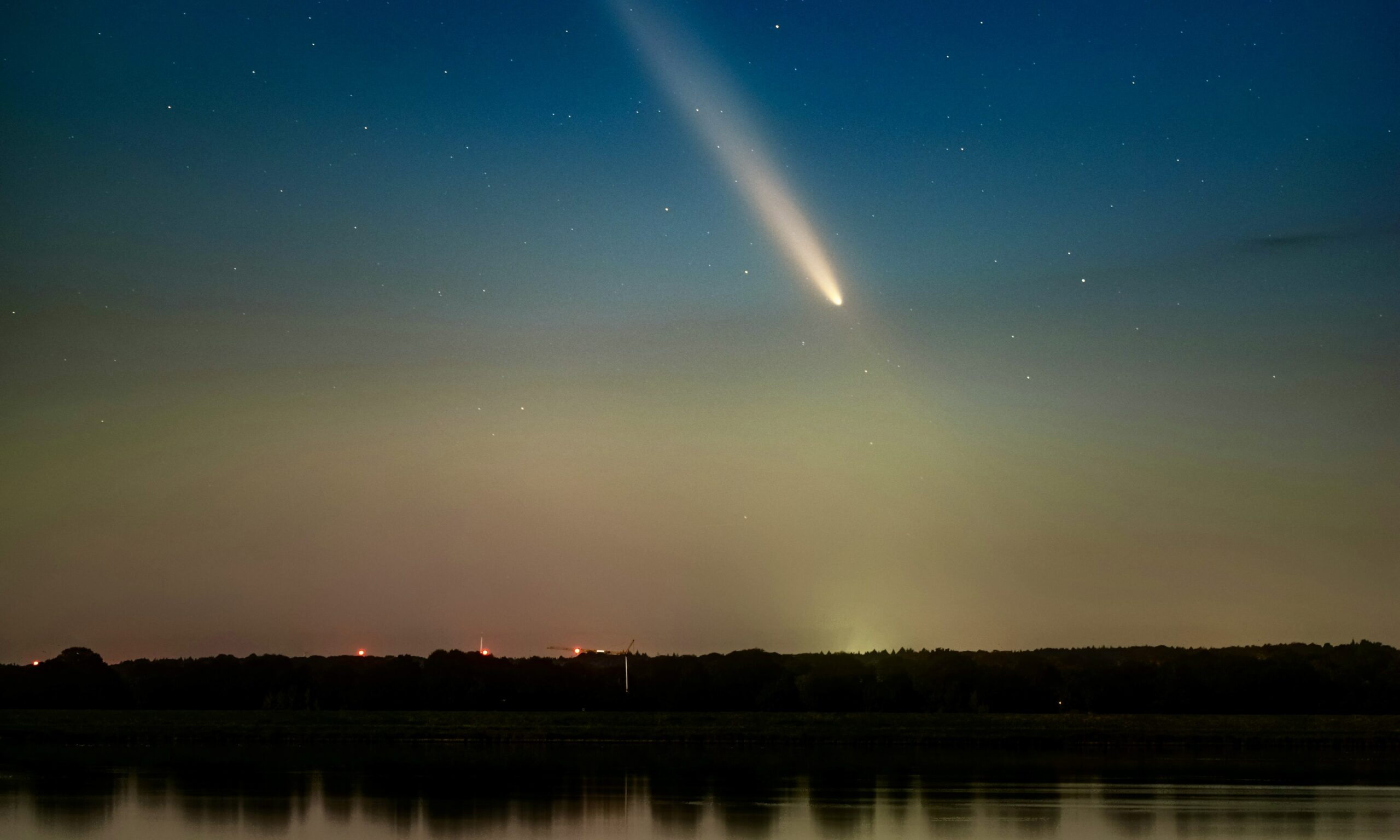
A prominent plasma physicist has sparked significant debate within the astronomical community by asserting that the interstellar object 3I/ATLAS is currently visible and not obscured behind the Sun. In a recent post on X (formerly Twitter), Dr. John Brandenburg stated, “Object 3I ATLAS had an apparent jet exhaust towards the Sun in September, producing a braking effect. This has now apparently reversed.” This statement challenges previous assertions that the object was completely hidden from view as it passed behind the Sun.
Earlier reports indicated that “3I/ATLAS is behind the Sun from Earth… it can’t be seen in Earth’s sky” at this time. Dr. Brandenburg’s observations suggest that the object may not be entirely concealed and warrant further investigation into its dynamics. Discovered by the ATLAS survey, 3I/ATLAS is the third known interstellar object, and its trajectory and activity have captured the attention of scientists worldwide.
Unusual Behavior Sparks Interest
Researchers have noted that 3I/ATLAS appears to have been active earlier than expected, exhibiting volatile sublimation at distances greater than typical for comets within the Solar System. One particularly intriguing aspect of this object is its peculiar sunward “anti-tail” plume, which some observers interpret as material being ejected toward the Sun, rather than away from it. This behavior is not common for comets and raises questions about its composition and activity.
The object is set to reach perihelion, its closest approach to the Sun, on approximately October 29, 2025, at a distance of about 1.36 astronomical units (AU) from the Sun. The news that 3I/ATLAS might already be visible has divided the astronomical community. Some experts insist that the object remains lost in solar glare, while others, bolstered by Brandenburg’s commentary, suggest it could be detectable through specialized instruments due to its unusual jet activity and plasma interactions.
If confirmed, this visibility would indicate that 3I/ATLAS is behaving unexpectedly, potentially shedding more dust and gas than previously anticipated or even generating its own electromagnetic effects that are observable by space-based telescopes. Such findings would mark it as the first interstellar comet observed under near-solar conditions in real time, enhancing its significance as only the third confirmed object from beyond the Solar System.
Implications for Future Observations
The ongoing debate extends beyond mere visibility; it also delves into how interstellar objects interact with solar radiation and magnetic fields. Dr. Brandenburg’s expertise in plasma physics lends credence to his claim that the object’s “apparent jet exhaust” may have influenced its motion, making it temporarily more reflective or detectable. Should 3I/ATLAS’s brightness indeed increase due to these jets, it could suggest that its surface or composition is particularly sensitive to solar heat.
These interactions could result in powerful bursts of energy, potentially altering the object’s course slightly. Astronomers at various institutions monitoring its trajectory will be keenly observing for new data from solar-tracking instruments to validate these claims.
As 3I/ATLAS moves away from the Sun’s glare in the coming weeks, it is expected to become more accessible for observation through ground-based and orbital telescopes. This upcoming observational window will be crucial for assessing whether Dr. Brandenburg’s assertions hold up under scientific scrutiny. If images or spectroscopic readings confirm that the interstellar object remained visible even during its conjunction with the Sun, it could revolutionize the methods through which astronomers study near-solar phenomena and interstellar visitors.
The excitement surrounding 3I/ATLAS lies not only in its visibility but also in the questions it raises about our understanding of these cosmic wanderers. As astronomers continue to explore its peculiar behavior, the debate prompted by Dr. Brandenburg’s insights ensures that 3I/ATLAS remains a focal point in contemporary astronomical research.
-

 Technology5 months ago
Technology5 months agoDiscover the Top 10 Calorie Counting Apps of 2025
-

 Technology3 weeks ago
Technology3 weeks agoOpenAI to Implement Age Verification for ChatGPT by December 2025
-

 Health3 months ago
Health3 months agoBella Hadid Shares Health Update After Treatment for Lyme Disease
-

 Health4 months ago
Health4 months agoAnalysts Project Stronger Growth for Apple’s iPhone 17 Lineup
-

 Health4 months ago
Health4 months agoErin Bates Shares Recovery Update Following Sepsis Complications
-

 Technology5 months ago
Technology5 months agoDiscover How to Reverse Image Search Using ChatGPT Effortlessly
-

 Technology3 months ago
Technology3 months agoElectric Moto Influencer Surronster Arrested in Tijuana
-

 Technology5 months ago
Technology5 months agoMeta Initiates $60B AI Data Center Expansion, Starting in Ohio
-

 Technology2 months ago
Technology2 months agoDiscover 2025’s Top GPUs for Exceptional 4K Gaming Performance
-

 Technology5 months ago
Technology5 months agoRecovering a Suspended TikTok Account: A Step-by-Step Guide
-

 Health5 months ago
Health5 months agoTested: Rab Firewall Mountain Jacket Survives Harsh Conditions
-

 Lifestyle5 months ago
Lifestyle5 months agoBelton Family Reunites After Daughter Survives Hill Country Floods

